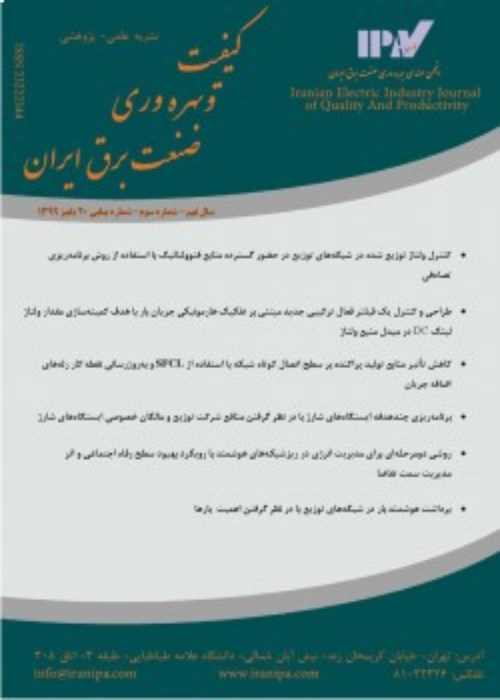Design and Implementation of an Improved Non-Isolated Step-Up DC-DC Converter with Continuous Input Current and Common-Ground Point Suitable for DC Micro-Grids and Low-Power Solar Systems
Nowadays, the clean, non-pollutant, free and renewable energy sources are in the center of attention in industry to meet the electric energy requirements. The smart energy networks need the energy storage systems as interfaces to realize the energy management and balance between the generated and demanded energy. The power electronic converters can efficiently play the role of interface between the energy sources, load and energy storage systems. The solar energy is one of the popular renewable energies that can be converted to the electric energy through the Photovoltaic (PV) panels. The output voltage (energy) of PV panels is usually low and in DC form. Thus, the DC-DC power converters are required to enhance the low output voltage of PVs to higher practical values. They should also be capable of extracting and tracking the maximum power point of PVs. Different topologies have been presented in the literature that fulfill some requirements of DC-DC converters, such as: step-up capability, availability of common ground point, continuous source current, low required devices, low current and voltage stress on the components and so on. This paper proposes an improved configuration that combines the impedance network and quadratic boost converter, which produces high voltage boosting factors (even at low or mild duty ratios) compared to its similar counterparts. Moreover, the voltage stress of its switching devices is limited to output voltage. It also benefits from continuous input current and common-ground point, which makes it very suitable for solar cell applications. The two switches of proposed converter operate synchronously, which leads to only two operational states in continuous conduction mode (CCM) and easy control strategy. The superiority of the proposed configuration over its counterparts has been certified by comprehensive comparative analysis. Furthermore, the real and ideal voltage gain of the proposed converter has been calculated and presented. The dynamic behavior of proposed converter in the closed loop control system has been investigated through the simulation analysis carried out in PSCAD/EMTDC software, which show a good and fast response on reference tracking and disturbance elimination. The correct operation of proposed converter has been approved by simulation and experimental analysis.


